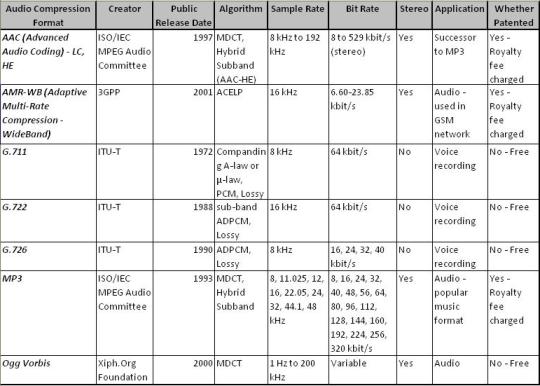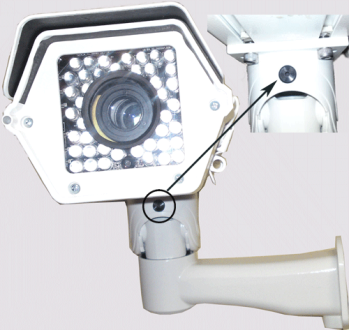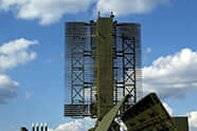Introduction
Many video surveillance cameras support a microphone (in-built, with the option for an external unit) and support external speakers. Audio adds value to surveillance content, in specific cases and provided it is of a quality that can be comprehended.
How effective are the audio components of a video surveillance camera, and what are the use-cases for deploying the audio-input and audio-output features of a video surveillance camera. This brief looks at the standards, the effectiveness, and use-cases with respect to the audio components of a video surveillance solution.
Audio Standards used in Video Surveillance
Audio is encoded, usually, using an audio compression standard. There are several audio standards, for various types of applications (speech, voice recording, music, studio-transmitter link, etc.). These standards are categorized as lossy (where there is a degradation in the quality of the sound, as a result of the compression algorithm) and lossless.
In the case of video surveillance devices, given the bandwidth optimization objectives, lossy standards are used. Some of the popular audio compression standards implemented in video surveillance products are summarized below: please note that the MP3 standard has been included solely to act as a reference, since it is most widely recognized audio compression standard, thanks to its use in music files.

Comparison Table of Audio formats used in video surveillance
(Source: Wikipedia)
Audio Components
Standards are just one part of the audio sub-system in video surveillance cameras, and usually the least important; given that the difference in audio between the various standards, in low bit-rate recordings, in usually imperceptible to listeners. More important are the hardware components of the audio sub-system.
Recording:
The objective behind providing a microphone in the camera is to listen to what a potential suspect or potential suspects may be saying, in addition to observing what is he is or they are doing. More rarely, an additional objective may be to generate alerts based on an analysis of the audio recording. Given these objectives, the type of implementation of the audio recording function will determine its utility.
- In-built Microphone
In most video surveillance camera hardware designs, the microphone is integrated on the camera board, with a small opening provided in the housing to allow it to record ambient sounds. While such an implementation may be of utility for indoor installations, where the volume and variety of extraneous noises are much lower; for outdoor installations, this feature serves very little purpose. In most cases, the quality of the recording in an outdoor installation makes it difficult to make out what the target individual/group is saying.
Use-case: Indoor recording in low-traffic and low-ambient noise zones. - External Microphone
Video surveillance camera designs usually support a line-in port to connect an external microphone. Given that the purpose of a hardware feature should not be obvious to a suspect, it is not recommended that standard external microphones be used; quite apart from the fact that they can be quite bulky and difficult to fit to a camera housing. Under the circumstances, an electret condenser microphone capsule is the best solution. The capsule fits in the camera housing, discreetly, and the quality of the recording is vastly superior to that of the in-built microphone. Depending on the recording area to be covered, a user may go in for a unidirectional microphone (pointing in the direction of the camera lens), or an omnidirectional microphone. The problem with an external microphone solution is that it does not discriminate between multiple sources of sound in a crowded field of view, thereby making it difficult to listen to what a potential suspect or potential suspects may be saying.
Use-case: Outdoor recording in low-traffic zones. - Zoom-microphone
The zoom-microphone is a feature offered on Sony’s range of camcorders. The feature works by increasing the foreground microphone sensitivity and directional characteristics as the camcorder zooms in to a subject. The zoom-microphone finetunes frequency response to ensure that speech in the foreground is emphasised over other sounds. These capabilities are achieved by firmware that links the camcorder’s lens zoom factor with the on-board microphone’s acoustic characteristics. While clearly a useful feature, for certain types of use-cases, there are curently no video surveillance cameras offering a zoom-microphone type of feature. It needs to be noted that this feature can be used only if the video feed is being monitored, wherein the person monitoring the video zooms in to an incident of interest, or if there is some type of audio analytics in place.
Use-case: Monitored outdoor and indoor recording in high-traffic and high-ambient noise zones.

Mistral IP video surveillance camera with external microphone
Broadcasting:
The objective behind supporting speakers is to send an audio warning using the camera, thus having a deterrent effect on potential law-breakers captured on camera. The audio warning may sent by the person monitoring the video feed, or may a recorded sound that is automatically transmitted whenever an alert is raised by the video analytics module. Either human monitoring or a video analytics application is a prerequisite for implementing the speakers feature on video surveillance cameras.
- Internal Speaker
Many indoor cameras feature an in-built speaker that serves the purpose for limited-space audio amplification. The quality and volume-level of the audio will not be very high.
Use-case: Small-space indoor setting, where camera feed is either monitored or video analysed. - External Speaker
In the case of outdoor settings, where there is likely to be a lot of ambient noise, and in the case of large-sapce indoor settings (e.g. a warehouse), an internal speaker will be of little use. Many IP video surveillance cameras support external speakers through a line-out port. The external speakers will be mounted on the camera housing or close to it, and may need to be camouflaged if the camera is.
Use-case: Outdoor setting or large-space indoor setting, where camera feed is either monitored or video analysed.
Conclusion
Audio is a feature either neglected or wrongly implemented in video surveillance cameras. As important as it is to exploit the audio capabilities of modern-day IP video surveillance cameras, so is it to do so with the right hardware and in the right setting.
Mistral offers a range of IP surveillance cameras that support full-duplex audio, as well as on-board and external microphones and speakers.



